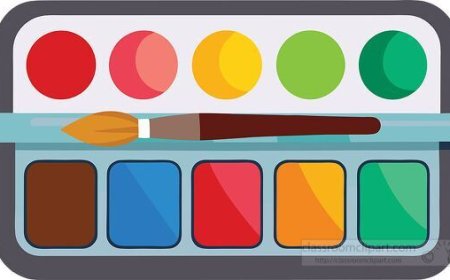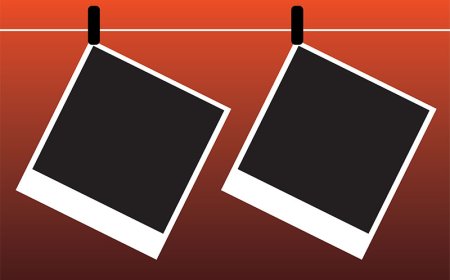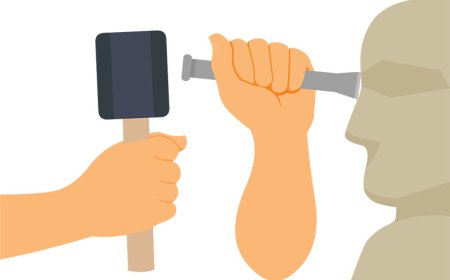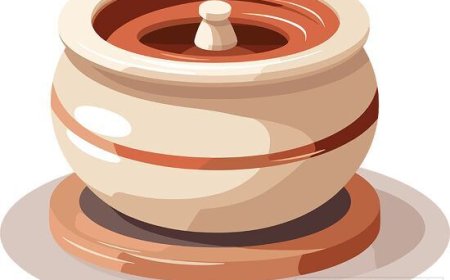Drawing for Students – What It Is, How It Works, and How to Start
Discover the world of drawing. Learn what drawing is, explore tools and techniques, and see how this art form helps express ideas and imagination.
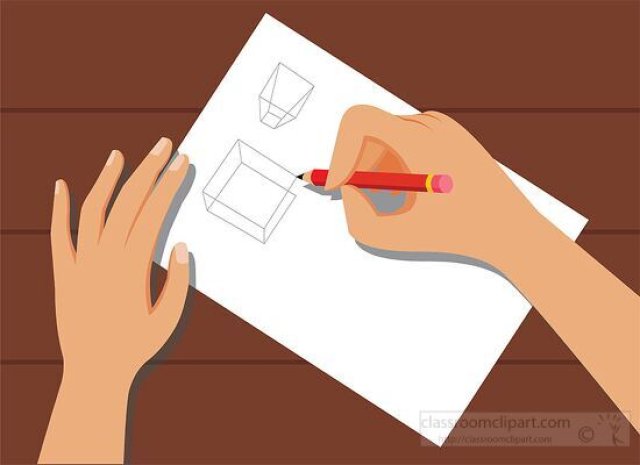
✏️ Drawing: The Foundation of Visual Art
🎨 Introduction
Before there were cameras, paintbrushes, or digital tablets, there were drawings. From ancient cave sketches to modern cartoons and character designs, drawing has always been a basic and powerful way for people to communicate and express themselves. Whether it's a doodle in your notebook, a detailed comic book, or a realistic portrait, drawing helps you tell stories, capture ideas, and bring your imagination to life.
Drawing is also the foundation of most other visual arts. Painters, sculptors, architects, animators, and designers all rely on drawing to plan, think, and create. In this article, we’ll explore what drawing is, its history, the tools and styles artists use, and how you can become a confident drawer, no matter your skill level.
✍️ What Is Drawing?
Drawing is the act of making marks on a surface to create images, shapes, or symbols. These marks are usually made with a tool like a pencil, pen, charcoal, chalk, or stylus. The most common surface for drawing is paper, but artists also draw on walls, sidewalks, wood, fabric, and digital screens.
Unlike painting, drawing doesn’t rely on color or brushstrokes—it focuses more on lines, edges, texture, light, and shading. Drawing can be realistic, abstract, cartoonish, technical, or purely expressive.
Most importantly, drawing is a skill anyone can develop with practice. You don’t need to be a “natural artist” to enjoy or improve your drawing ability. Everyone can learn to draw!
📚 A Short History of Drawing
Drawing has been around for tens of thousands of years. The earliest known drawings were found in caves, like those in Lascaux, France, where ancient humans used charcoal to sketch animals and handprints over 17,000 years ago.
In ancient Egypt, people used drawings to tell stories, write words (hieroglyphs), and decorate tombs. Greek and Roman artists used drawing to study the human body and plan sculptures and buildings.
During the Renaissance (around 1400–1600), artists like Leonardo da Vinci and Michelangelo used sketchbooks to explore science, anatomy, inventions, and emotions. Their detailed drawings helped improve realism in painting and sculpture.
In modern times, drawing became more than just preparation for other art—it became an art form in itself. With styles like cartooning, abstract line art, graphic novels, and digital sketching, drawing has become a favorite form of self-expression across the world.
🧰 Drawing Tools and Materials
One of the best things about drawing is how easy it is to get started. All you really need is something to draw with and something to draw on.
Common drawing tools include:
- Pencils – Used for sketching and shading. Ranges from hard (light lines) to soft (dark lines).
- Pens and ink – Great for strong, clean lines and detailed designs.
- Charcoal – Soft, black material used for bold, expressive work.
- Colored pencils – Add color while keeping the control of a pencil.
- Markers – Good for bright, bold coloring and outlining.
- Erasers – Used to correct mistakes or create highlights.
- Digital stylus/tablet – For digital drawing using software like Procreate, Photoshop, or Sketchbook.
Paper types vary too. Smooth paper is good for fine detail; textured paper holds charcoal and creates more “tooth” for shading.
✏️ Types and Styles of Drawing
Drawing comes in many forms, and each artist finds their favorite style. Here are a few popular types of drawing:
- Sketching – Quick, loose drawings to capture ideas or movement.
- Contour Drawing – Focusing only on the outline of shapes.
- Shaded Drawing – Using light and dark areas (value) to show depth.
- Gesture Drawing – Fast drawings that capture motion or pose, often used in figure drawing.
- Cartooning – Exaggerated or funny drawings, often used in comics and animation.
- Technical Drawing – Precise lines and measurements for architecture, engineering, or graphic design.
- Illustration – Artwork made to go with text, like in books or ads.
- Abstract Drawing – Uses shapes, lines, and forms without trying to look realistic.
No matter the style, drawing helps artists think visually and express complex ideas.
🧠 Key Drawing Skills
Drawing may look like magic, but it’s built on simple skills that anyone can learn. These include:
- Line – The most basic building block. Lines can be thick, thin, straight, or curved.
- Shape and Form – Understanding how to draw circles, squares, and how they turn into 3D objects.
- Perspective – Making things look closer or farther away using vanishing points and lines.
- Value – Using light and dark tones to show depth and shading.
- Texture – Creating the feel of surfaces like fur, stone, or fabric with patterns and lines.
- Proportion – Making sure parts of your subject are the right size compared to each other.
Practicing these skills regularly helps young artists gain confidence and control.
🧑🎨 Drawing and the Brain
Drawing is good for your brain! Scientists have found that drawing:
- Boosts concentration and memory
- Builds fine motor skills
- Encourages creative thinking
- Helps people process emotions and reduce stress
- Improves visual learning, useful in science, math, and reading
Even doodling in class can help some students stay focused and remember information better.
🧬 Drawing in Art Education
In schools, drawing is part of the Visual Arts curriculum. According to the National Core Arts Standards, drawing lessons support students by helping them:
- Create original art using different tools and media
- Present their work in portfolios or displays
- Respond to visual art through critique and discussion
- Connect personal stories and cultural history to artistic expression
Drawing also supports cross-curricular learning in subjects like science (drawing plants or animals), history (illustrating historical scenes), and English (designing book covers or characters).
✍️ How to Start Drawing: Tips for Students
Ready to start drawing? Here's how to begin:
- Keep a sketchbook – A small notebook just for drawings and ideas.
- Practice every day – Even 10 minutes of sketching helps improve your skills.
- Draw what you love – Animals, comics, cars, faces—anything that excites you.
- Use references – Look at real objects or photos when learning to draw.
- Don’t worry about being perfect – Mistakes are part of the process!
- Try different tools – Experiment with pens, markers, charcoal, and digital apps.
- Take inspiration from other artists – Learn from styles you admire and try your own versions.
Drawing is like learning a sport or instrument—the more you practice, the better you get.
🌟 Interesting Facts About Drawing
- Leonardo da Vinci sketched inventions like helicopters and tanks in his notebooks—400 years before they were built.
- Manga, Japanese comic-style drawing, is one of the most popular art forms in the world.
- Some artists draw realistic portraits with just a ballpoint pen!
- Blind contour drawing is an exercise where artists draw without looking at the paper to improve observation.
- The longest drawing marathon on record lasted over 100 hours!
🧾 Key Takeaways
- Drawing is the art of making images with lines, shapes, and shading.
- It’s one of the oldest and most important forms of visual art.
- Anyone can learn to draw with practice and observation.
- Drawing supports creativity, focus, and learning across school subjects.
- It’s a fun, flexible, and rewarding way to express yourself!
📘 Vocabulary
| Word | Definition |
|---|---|
| Contour | The outline of a shape or object |
| Shading | Using light and dark to show form and depth |
| Perspective | A technique to show distance and 3D space |
| Gesture | Quick, expressive sketching of movement |
| Proportion | The size relationship between parts of a drawing |
| Sketchbook | A book used to practice and collect drawings |
| Value | The lightness or darkness of a color or tone |
🎯 Interactive Quiz
1. What is the main tool used in drawing?
A) Paintbrush
B) Stylus
C) Pencil
D) Ruler
2. What does “shading” help show in a drawing?
A) The artist’s name
B) Emotion
C) Depth and light
D) Tools used
3. Which of the following is NOT a type of drawing?
A) Gesture
B) Contour
C) Sculpture
D) Cartoon
4. What is the purpose of a sketchbook?
A) To paint murals
B) To take math notes
C) To practice and collect drawings
D) To write music
5. What does “perspective” help an artist do?
A) Add color
B) Make 3D space look real
C) Shade faster
D) Blend pencil marks


















































